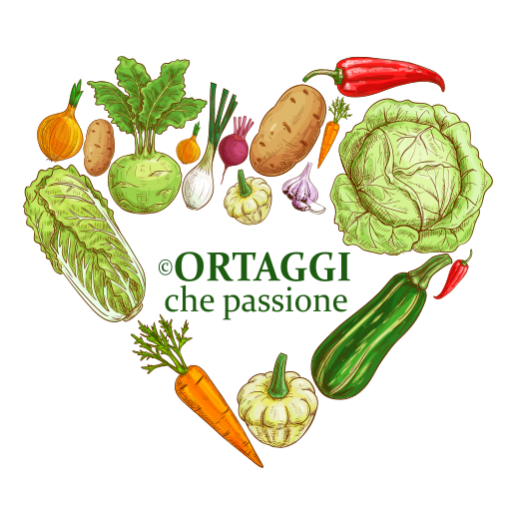Hummus (in Arabic حمص, also spelled houmous and humous) is an original and typical recipe from the Middle East. A dip made from chickpeas, tahini (sesame paste), lemon, garlic, and olive oil, enjoyed as an appetizer or side dish.
There’s no “right” or “wrong” way to eat it: you can truly let your taste and imagination guide you. The most classic way is to spread it on a piece of warm or soft pita bread, perhaps freshly toasted. Use it a bit like a cream for dipping, scooping it up with pieces of bread. But it’s also great with whole grain croutons, breadsticks, or rye bread.
A fresh and light alternative is to use it as a dip for raw vegetables. Carrots, celery, cucumbers, bell peppers cut into sticks: hummus adds flavor and texture, and it’s perfect for a healthy snack or light appetizer.
You can also use it as a base for a vegetarian wrap, spreading it on a tortilla and maybe adding grilled vegetables, avocado, or salad. Or, if you like to experiment, try adding it to a bowl with grains like farro or quinoa, along with vegetables and seeds: it becomes a kind of creamy dressing, very nutritious and filling.
Finally, you can also enjoy it simply by the spoonful, perhaps garnished with a drizzle of good oil, a sprinkle of paprika or za’atar, and some olives to accompany.
In short, hummus is a healthy treat that you can tailor to your tastes. And above all, it’s a faithful companion for those who choose a plant-based diet or botanical cuisine without ever compromising on flavor.
SEASON of #dried chickpeas: all year round.
DIPS with legumes or vegetables
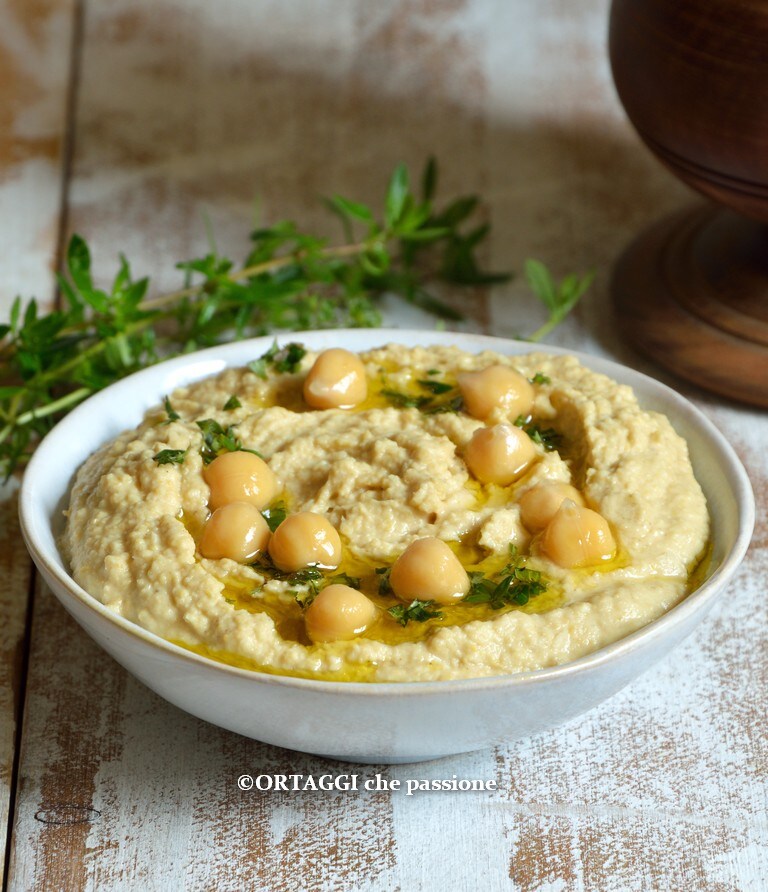
- Difficulty: Easy
- Cost: Cheap
- Preparation time: 10 Minutes
- Portions: 4People
- Cooking methods: No cooking
- Cuisine: Middle Eastern
- Seasonality: All seasons
- Energy 201.07 (Kcal)
- Carbohydrates 16.82 (g) of which sugars 1.09 (g)
- Proteins 7.06 (g)
- Fat 11.86 (g) of which saturated 1.42 (g)of which unsaturated 4.39 (g)
- Fibers 5.34 (g)
- Sodium 113.14 (mg)
Indicative values for a portion of 100 g processed in an automated way starting from the nutritional information available on the CREA* and FoodData Central** databases. It is not food and / or nutritional advice.
* CREATES Food and Nutrition Research Center: https://www.crea.gov.it/alimenti-e-nutrizione https://www.alimentinutrizione.it ** U.S. Department of Agriculture, Agricultural Research Service. FoodData Central, 2019. https://fdc.nal.usda.gov
What’s inside the hummus?
Even without 1-2 ingredients listed below, the hummus is always great.
- 10.5 oz cooked chickpeas (I use dried chickpeas soaked and then cooked, but canned precooked chickpeas are also fine)
- 1 clove garlic (small – only if desired)
- 1.4 oz tahini (dark – if using the light kind, you can add 2.1 oz – alternatively use sesame seeds, preferably toasted)
- to taste salt (and spices or herbs as desired 🍀)
- 0.2 oz lemon juice (optional)
- 1 oz aquafaba (or the liquid from canned chickpeas or plain water)
- 0.7 oz extra virgin olive oil (for a light version, use more water)
🍀What spices can be added to hummus?
Star anise, cinnamon, cardamom, cloves, turmeric, curry, garam masala, paprika, chili pepper, white or black pepper, nutmeg, ground cumin seeds, za’atar, ginger.
🍀What herbs can be added to hummus?
Dill, basil, coriander, chives, mint, oregano, parsley, rosemary, savory, thyme.
To flavor the hummus, it’s important not to overdo it with spices or herbs: add a pinch, taste, and decide if you like the flavor, so you can better adjust without covering the original flavors.
🍀🍀🍀🍀
SERVINGS PER PERSON
🍀 1.8-2.5 oz per person if it’s an appetizer or part of an aperitif.
🍀 3.5-5.3 oz if it’s the main course (like in a bowl or with falafel).
🍀🍀🍀🍀
How many calories are in chickpea cream?
Tools
- Chopper
Chickpea Hummus
In a blender, pour all the ingredients and blend until smooth.
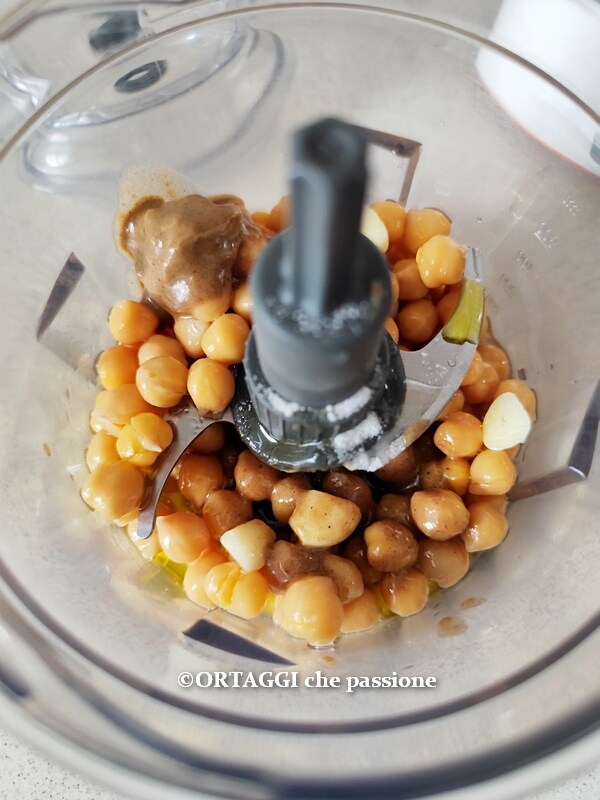
If the hummus is too thick, add a little water (or aquafaba for a more intense flavor) gradually, until reaching the desired consistency.
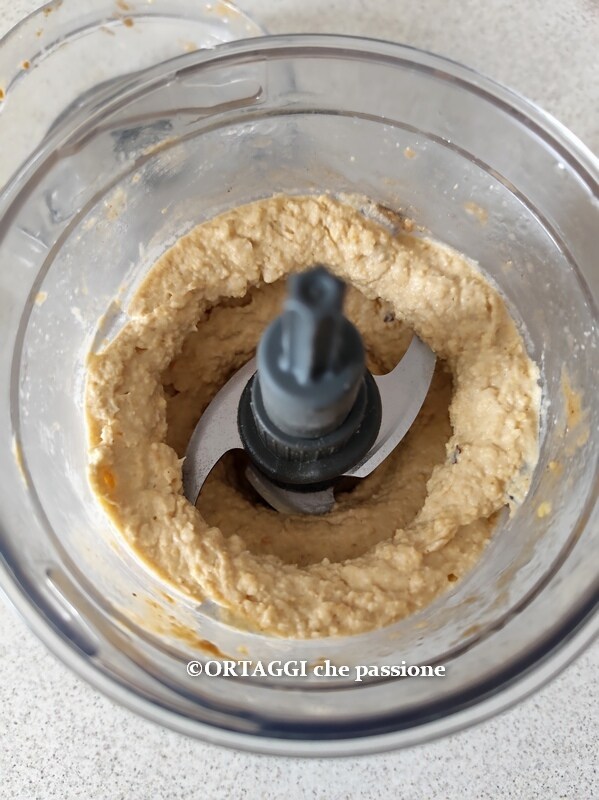
Transfer to a small bowl and garnish with sesame seeds and chili powder. Or serve with cooked chickpeas, chopped herbs (I use savory), and extra virgin olive oil.
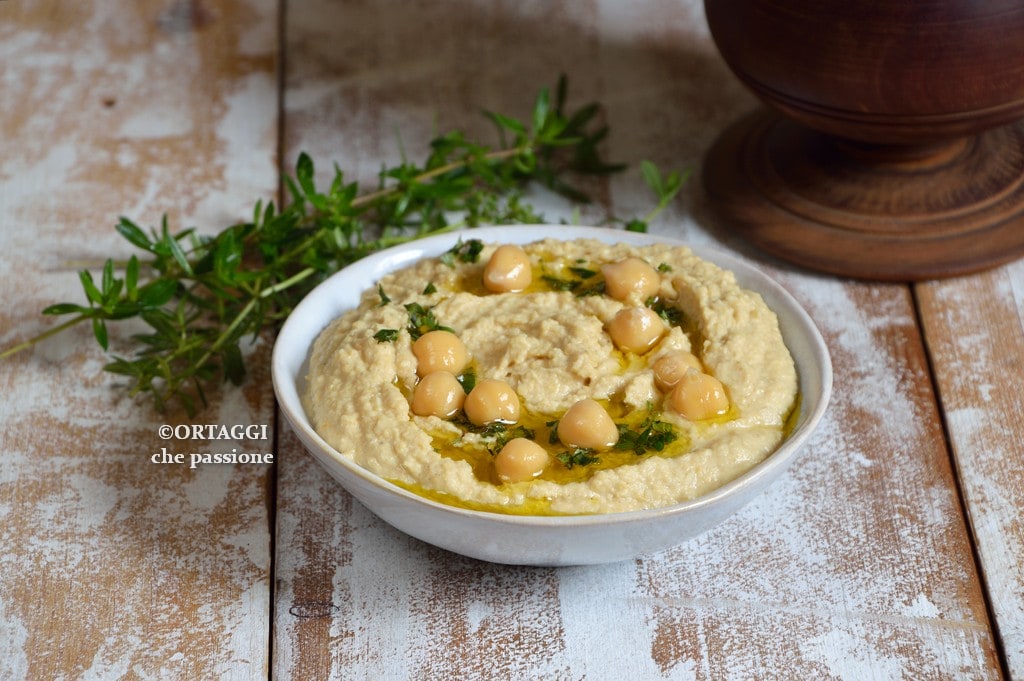
To make hummus without a blender, you can mash the cooked chickpeas with a fork or potato masher, then mix by hand with tahini, lemon juice, minced garlic, extra virgin olive oil, and a little water (or aquafaba) until you get the smoothest possible cream.
Just put the cooked chickpeas and garlic pieces in a mortar, then add the tahini, lemon juice, and a pinch of salt. Start pounding slowly and patiently. Gradually add a drizzle of olive oil and a little water (aquafaba) to achieve a creamy and homogeneous texture.
How long does hummus last in the fridge?
Homemade hummus keeps in the refrigerator for up to 5 days if stored correctly in an airtight container. It’s important to keep it always tightly closed and to use clean utensils to avoid contamination, thus maintaining its freshness and flavor longer.
FAQ (Questions and Answers)
Why add ice to hummus?
Ice is added to hummus to make it creamier and smoother. Cold water helps better emulsify the ingredients, giving the cream a smoother and lighter consistency.
Is hummus eaten hot or cold?
Hummus is typically eaten cold or at room temperature. However, you can also choose to warm it slightly if used as a sauce in hot dishes, like a wrap or tortilla.
It’s important not to heat it too much to avoid altering the delicate taste of the lemon and tahini.How should hummus be eaten?
Hummus can be eaten in many ways: with warm pita bread (classic Arabic bread), unleavened bread, raw vegetables like carrots, celery stalks, and cucumbers, or spread in wraps or buns. Also great in a bowl with grains and vegetables. It’s healthy, creamy, and super versatile.
How to make hummus without tahini?
To make hummus without tahini, use more extra virgin olive oil and, if available, add toasted sesame seeds for a hint of flavor.
Or, even without sesame seeds, for a lighter version, mash the chickpeas well with lemon, garlic, and salt, adding aquafaba (cooking or canning water) until you get a soft cream.What is the difference between light and dark tahini?
Light tahini is made from hulled sesame seeds, meaning they are stripped of their husks. It has a milder taste, a more fluid consistency, and a light beige color. It’s most commonly used in recipes like hummus because it doesn’t overpower other flavors.
Dark tahini, on the other hand, is made with whole seeds, meaning with the husk. The result is a denser paste, with a strong and slightly bitter taste, and a darker brown color. It is richer in fiber but also more intense.

